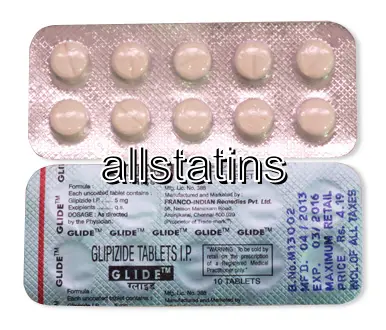| Package | Dosage | Price | Price per Dose | |
|---|---|---|---|---|
| Dosage: 5mg | ||||
| 360 pill | 5mg | $213.47 | $0.59 | |
| 240 pill | 5mg | $154.27 | $0.65 | |
| 180 pill | 5mg | $120.18 | $0.66 | |
| 120 pill | 5mg | $86.09 | $0.72 | |
| 90 pill | 5mg | $69.95 | $0.77 | |
| 60 pill | 5mg | $48.42 | $0.81 | |
| 30 pill | 5mg | $25.10 | $0.84 | |
| Dosage: 10mg | ||||
| 360 pill | 10mg | $315.73 | $0.88 | |
| 240 pill | 10mg | $233.20 | $0.97 | |
| 180 pill | 10mg | $190.15 | $1.06 | |
| 120 pill | 10mg | $143.50 | $1.20 | |
| 90 pill | 10mg | $121.97 | $1.35 | |
| 60 pill | 10mg | $84.30 | $1.42 | |
| 30 pill | 10mg | $46.63 | $1.52 | |

Glipizide Description
Overview of Glipizide
Glipizide is a widely used medication primarily prescribed to manage type 2 diabetes mellitus. It belongs to the class of medications known as sulfonylureas. Its main function is to help lower blood sugar levels by stimulating the pancreas to produce more insulin. This makes it a beneficial choice for individuals who have difficulty controlling their blood glucose levels through diet and lifestyle changes alone. Due to its effectiveness, Glipizide has become a common component of diabetes management plans across the globe.
How Glipizide Works
The mechanism of Glipizide involves binding to specific receptors on pancreatic beta cells. This interaction prompts these cells to release more insulin, which then helps your body utilize glucose more effectively. As a result, blood sugar levels tend to stabilize, reducing the risk of complications associated with high blood glucose, such as nerve damage, kidney issues, and cardiovascular problems. Importantly, Glipizide is usually prescribed alongside dietary modifications and exercise to optimize blood sugar control.
Advantages of Using Glipizide
One notable benefit of Glipizide is its fast onset of action. Patients often notice improvements in their blood sugar levels within a few days of starting treatment. Its oral administration makes it convenient, especially for those who prefer pills over injections. Additionally, Glipizide has been extensively studied, and its effectiveness is well-documented. Many patients experience better glycemic control when using this medication, which can lead to an improvement in overall quality of life. It is also generally affordable, making it accessible for many people managing diabetes on a budget.
Possible Side Effects and Precautions
As with any medication, Glipizide may cause side effects. The most common include weight gain, increased hunger, nausea, and dizziness. Some individuals may experience allergic reactions, such as skin rashes or swelling. It is essential for patients to monitor their blood sugar levels regularly to avoid hypoglycemia, which can occur if too much insulin is produced or if food intake is irregular. Patients with kidney or liver issues, or those with sulfa allergies, should inform their healthcare provider before starting Glipizide, as adjustments may be necessary. Proper medical supervision is crucial to ensure safe and effective use of this medication.
Usage Guidelines
Glipizide is typically taken once or twice daily, with or without food, depending on the doctor's instructions. The dosage may be gradually increased to achieve optimal results while minimizing side effects. Patients should adhere strictly to their prescribed schedule and avoid skipping doses. Regular blood glucose monitoring is vital to assess the medication's effectiveness and to make any necessary adjustments. Additionally, maintaining a healthy diet and engaging in regular exercise can significantly enhance the benefits of Glipizide in managing diabetes.
Conclusion
Glipizide remains a reliable option for many individuals living with type 2 diabetes. Its ability to effectively stimulate insulin production helps in maintaining better blood sugar control. While it offers several benefits, including quick action and affordability, it also requires careful monitoring due to potential side effects. When used responsibly under medical guidance, Glipizide can be a valuable part of a comprehensive diabetes management plan, contributing to improved health outcomes and reduced risk of diabetes-related complications.
See Also

